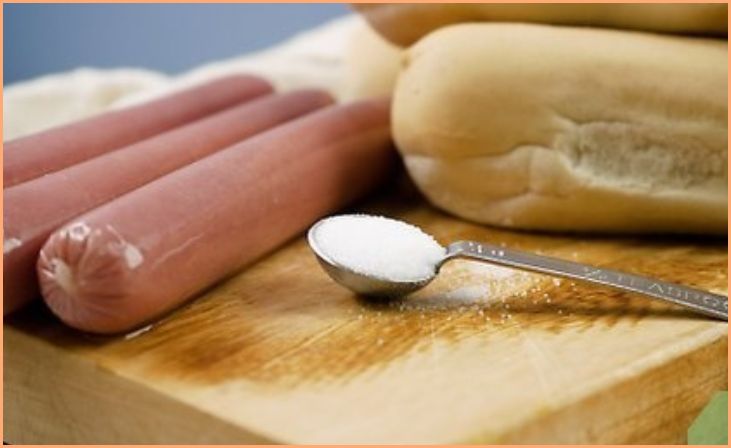Boil sausage is a simple and effective cooking method that ensures they’re thoroughly cooked while retaining their juicy tenderness. The ideal boiling time for sausages varies based on their size, type, and whether they’re raw or pre-cooked.
It doesn’t matter whether it’s a family get-together or a dinner party; sausages are always a great addition to every cookout. Sausage is a fundamental element of every delicious dish because of its richness and filling and knowing about how long to boil sausage.
If you want to use them in a meal or finish them by grilling, boiling is a great way to prepare them. Boiling does not require any additional cooking oils and can be done in any vessel, which helps to minimize fat content and cleanliness.
Here’s how long to boil sausage!
How Long to Boil Sausage

Approximately 10 minutes. I am not saying that sausages are the healthiest option out there, but you can make its health impacts less and taste better by cooking it in the right way.
Boiling is an ideal way to cook sausages as it entirely makes the middle of the sausage go to a safe internal temperature.
While boiling may not result in a crisp, golden surface, it will help maintain your sausages’ fat and moisture content, making it an excellent cooking technique for emulsified sausages. These are packed with smooth, finely ground beef, water, and fat. Hotdogs and Frankfurters are a few examples.
The length of the boiling time may vary based on the type of sausage you’re making. When preparing uncooked sausage, it’s usually a good idea to have a precise cooking time. To check, use a meat thermometer – the internal temperature should be 165 degrees Fahrenheit to be cooked safely.
Also, keep in mind that thicker sausages will take longer than thinner sausages to attain this internal temperature. Because sausage comprises ground beef, it must be cooked at a higher temperature than steaks and other kinds of meat.
Read also: 10 Superfood Snacks to Keep You Energized All Day Long
How to Boil Sausages Perfectly?

Boiling is the easiest way to boil sausages perfectly. So let’s check out the simple steps to boil sausage perfectly:
- Make use of purified water.
- To avoid spillage, use a large enough pot.
- To improve the timing of your boil, add them to already hot water.
- Choose whether to maintain the fat in the casing or drill holes to release the fat.
- Boil sausage for 10 minutes after adding the sausages to the pot slowly.
- Make a big deal out of your marinade. Poke some holes in them and throw them in whatever oil, vinegar, and seasonings you choose.
- Spiced sausages are available for distinct cuisines. For instance, Italian sausage may be used in pasta meals.
- Sausages can be eaten 3-4 days after being refrigerated. They may also be frozen for 1-2 months.
How Long to Boil Smoked Sausage
When boiling sausages, the cooking time typically ranges between 10 to 15 minutes, but this can vary based on the sausage’s size and type. Once the sausages are thoroughly cooked and ready to eat, occasionally, there might be excess water left in the pot from the boiling process.
To remove this excess water, there are a couple of straightforward methods. One way is to carefully turn the pot upside down while securely holding the lid in place. This motion allows the water to pour out while keeping the sausages inside the pot. It’s important to do this cautiously to avoid any spills or accidents.
Another method is to pour the contents of the pot, including the sausages and excess water, into a colander placed in the sink. The colander will strain and separate the sausages from the water, leaving you with perfectly cooked sausages without the excess liquid.
Read also: How to Tell if Broccoli is Bad: Freeze, Storage and Defrost
Does Boiling Sausage Reduce Sodium?

Certainly! When discussing the impact of salt in water used for boiling, there’s a notion that salt balances due to osmosis. While this concept holds some validity, quantifying its precise effect isn’t straightforward and isn’t a critical factor in your cooking calculations.
The idea is that water naturally tends to reach a salt balance through osmosis, but accurately measuring this effect can be challenging. To do so, you’d need to measure the salinity of the water before and after the boiling process, considering various other variables that might influence the outcome.
However, for practical cooking purposes, the minute changes in salt balance during boiling aren’t typically crucial. While adding salt to water can impact the boiling point and potentially enhance the flavor absorption of certain foods like pasta or vegetables, the exact scientific measurement of this effect is intricate and often negligible in everyday cooking scenarios.
Conclusion
Boiling sausages is a versatile and straightforward cooking method that ensures they’re cooked through while preserving their juicy flavors. The ideal boiling time for sausages depends on their size and type. Generally, simmering sausages in gently boiling water for about 10-15 minutes achieves a perfect balance between thorough cooking and maintaining their tenderness. Adjust the timing based on sausage thickness and whether they’re pre-cooked or raw. Once boiled, you can enjoy these sausages as is or incorporate them into various dishes for a delicious meal.
Boiling sausages is a convenient way to cook them thoroughly, and it serves as a great base for various recipes, from sausage and pasta dishes to casseroles. Adjust the boiling time as needed to achieve your preferred texture and taste!
FAQs
When sausages are fully cooked, they’ll plump up and firm up slightly. Check their internal temperature with a meat thermometer—it should reach 160°F (71°C) for safe consumption.
It’s generally not necessary to prick sausages before boiling. Pricking can release flavorful juices and may lead to drier sausages. However, if you prefer to reduce the risk of bursting, make a few small pricks on the sausages.
You can boil different types of sausages together as long as they require similar cooking times. Mixing sausages with vastly different sizes or pre-cooking requirements might result in uneven cooking.
Adding herbs, spices, or aromatics like bay leaves, garlic, or onions to the boiling water can infuse extra flavor into the sausages. However, it’s optional and depends on personal preference.
Absolutely! After boiling, finishing the sausages on a grill or in a pan for a few minutes can add a delicious charred exterior and extra flavor.







